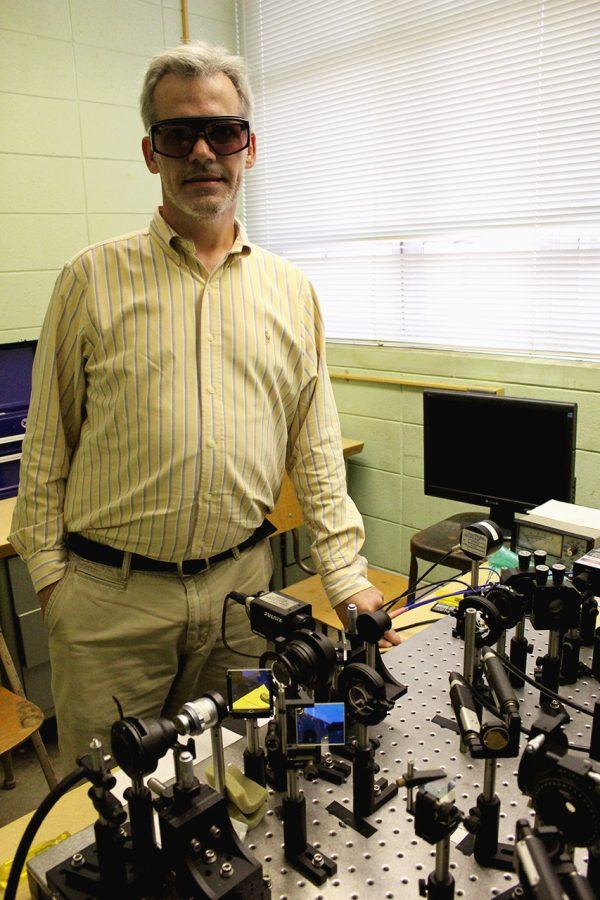Professor builds experiment for students
November 1, 2012
Seeing a blast of green light coming from the physics lab on the third floor of Floyd Science Building is no reason for concern — it’s just the physics students experimenting with optical tweezers.
It looks like Frankenstein’s lab, said Brian Thompson, professor of physics at UNA and builder of the tweezers.
He said the tweezers’ biggest benefit is the opportunity it has created for student research.
“This has given me an outlet to have students perform directed research,” Thompson said.
Thompson received his Ph.D. in physics from the University of Kentucky in 1994. For the next five years, he worked in government and university labs in England, Italy and Long Island, N.Y., before being hired at UNA in 1999.
Thompson said he built the tweezers in 2002 after the physics department began receiving money from lab fees. Building an experiment for students had been a goal of his since he was hired.
“It was those two converging ideas — I wanted the students to have an experiment, and the department had money to pay for it,” Thompson said.
Since the tweezers were built, Thompson’s students have used the device to study light.
The tweezers utilize dichroic mirrors to focus a laser beam under a microscope. When studying light, students focus the laser onto microspheres treated with fluorescent dye, allowing them to observe a ring of light through photographs or video taken by the attached camera, which shoots 200 frames per second.
“Because the laser light is so powerful, we don’t have an eye-piece on our microscope — we don’t stick our eye down there to look at it,” Thompson said. “We use a camera, so if anything bad happens, it happens to the camera instead of our eye.”
Thompson said that the tweezers have created many opportunities for student research over the years, though there are no students working with the tweezers this semester.
“(Students are) involved in all aspects of research — they have to do the building, they collect the data, they analyze the data, they make presentations (and) we take them to conference,” he said.
Thompson said he decided to build the tweezers because of an article he discovered while researching for an experiment to build. He then enlisted a student’s help to build the tweezers.
“I gathered all the pieces together and then a student and I built it, and we demonstrated that it worked,” he said.
Since they were built in 2002, $50,000 worth of upgrades has been put into the tweezers. Thompson said he is looking at updating equipment again to accommodate new types of experiments, an upgrade that will cost $30,000 to $40,000.



![Caleb Crumpton [COURTESY OF UNA SGA]](https://theflorala.com/wp-content/uploads/2024/07/caleb-crumpton-courtesy-of-SGA-425x600.jpg)






